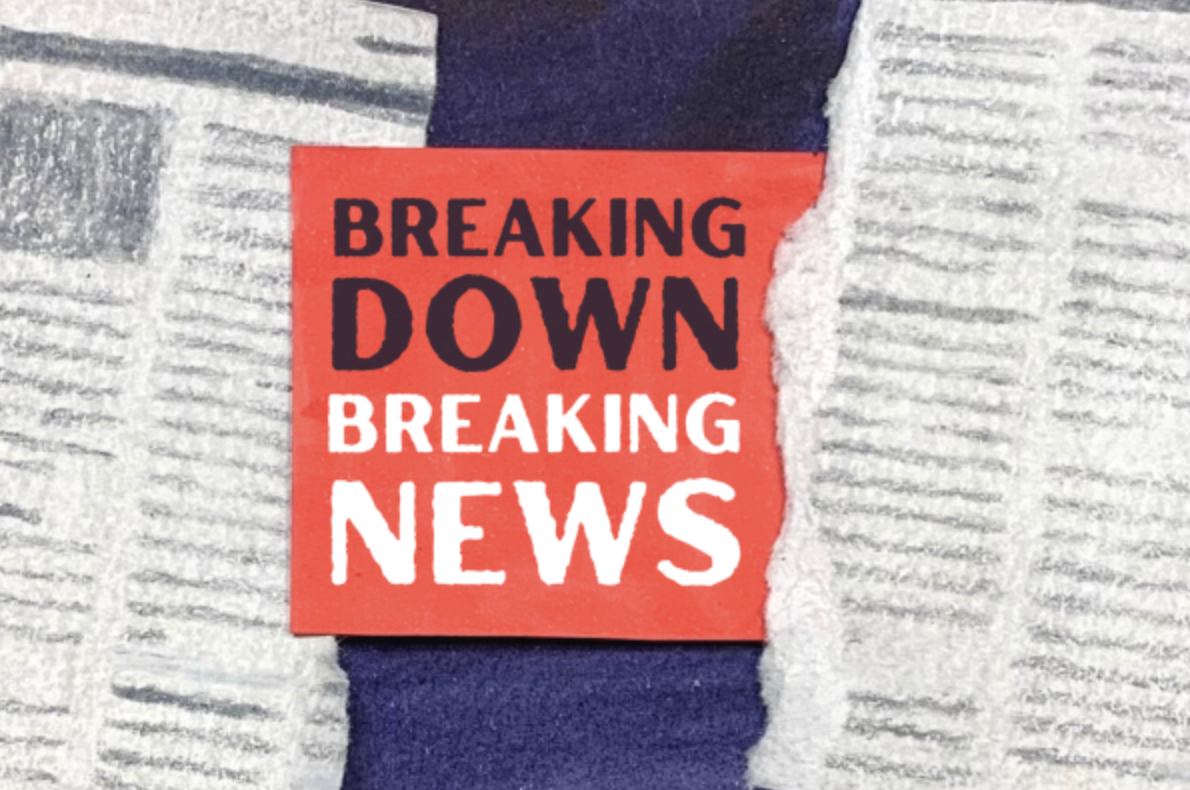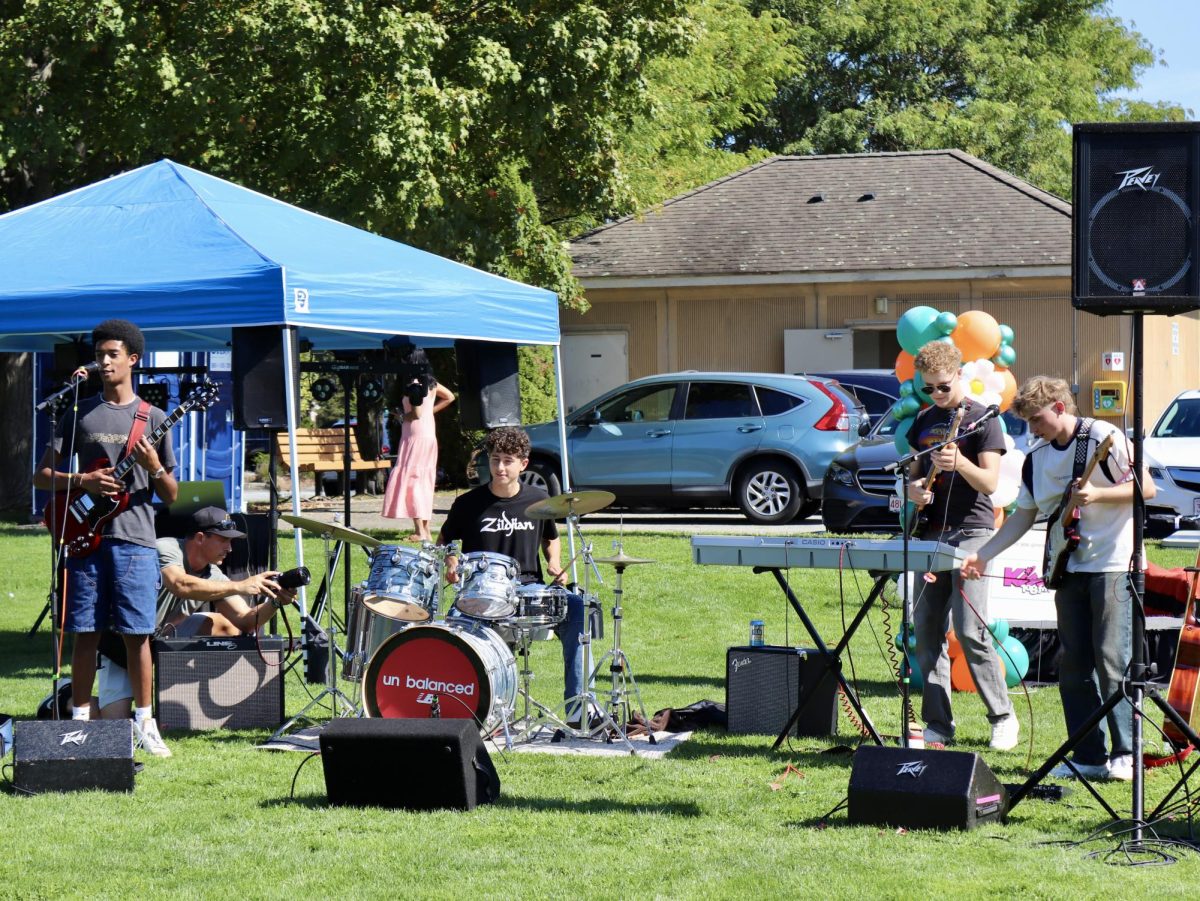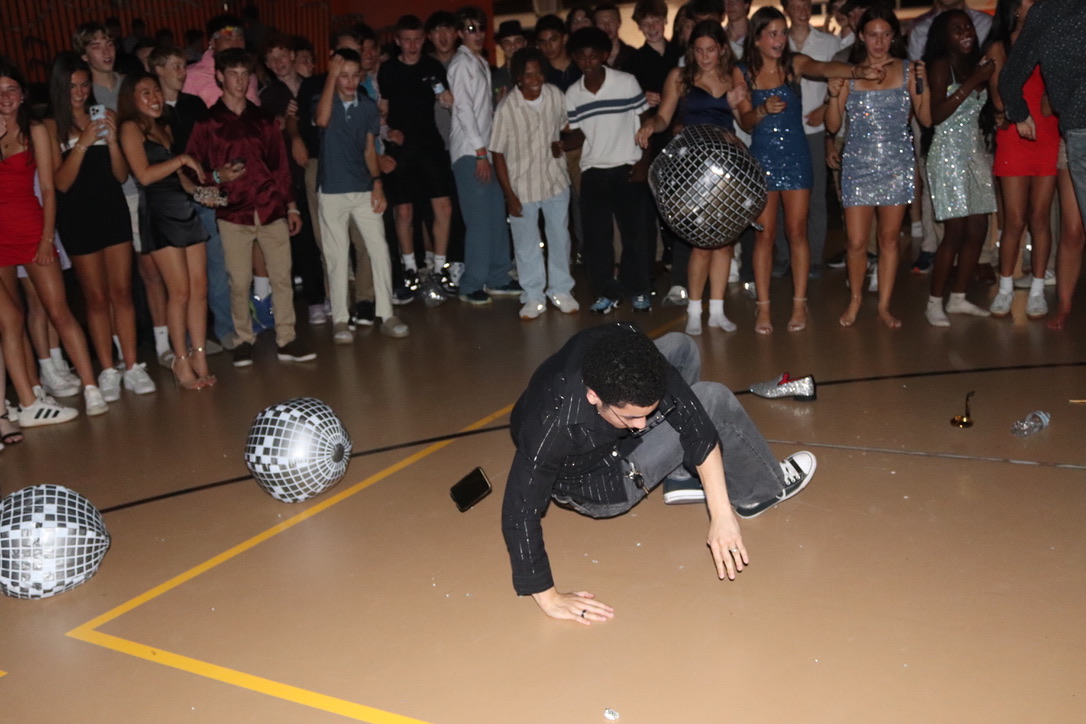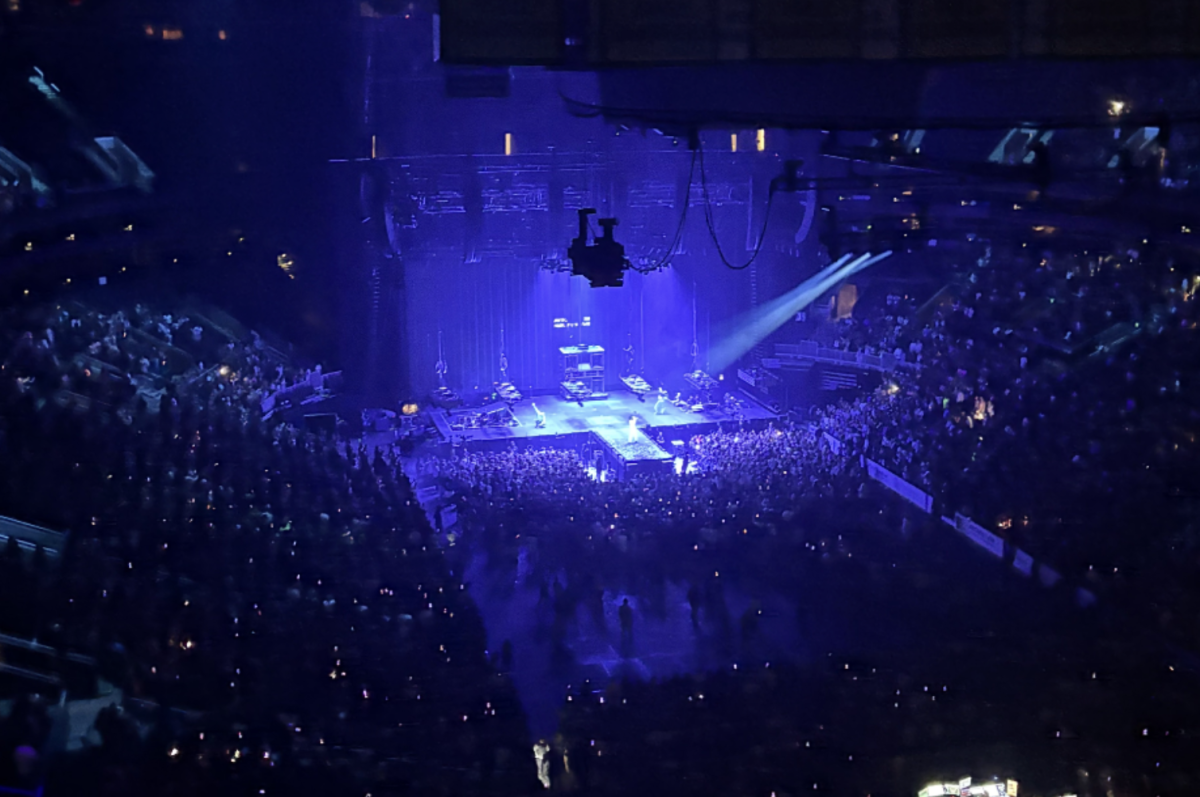WW’ 20: U.S. Navy member presents on nuclear power
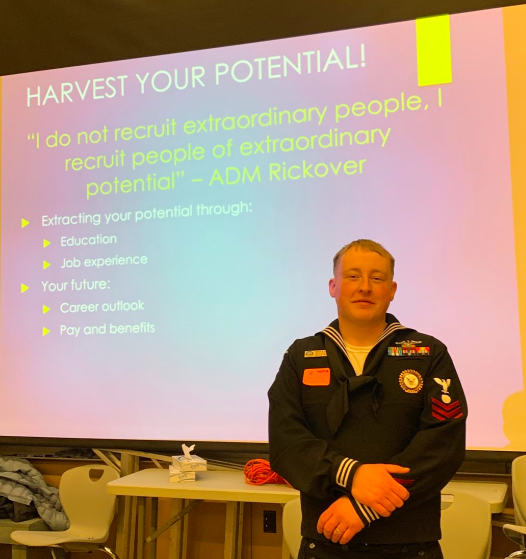
Navy electrician Marcus Harrold presents to WHS about using nuclear power in the Navy. The U.S. Navy mainly uses nuclear power as its energy source. “I have been in the Navy for a little over eight years,” Harrold said. “My main job is a technician on board where I primarily work with nuclear power.”
February 4, 2020
The U.S. Navy has now adapted to primarily using nuclear power on their ships and in submarines, the energy normally produced with Uranium 235 fuel. Navy electrician Marcus Harrold came to WHS to talk about how it’s important for students and teachers to become aware that nuclear power exists and why it can be good choice of energy to use.
The Navy has been using nuclear power since its first commissioned ship in 1954.
“I decided to join the Navy because all my life I have wanted to serve my country,” Harrold said. “Also, when I felt like I was going nowhere because college wasn’t working and I was working a lot, I knew I needed to set myself up better in life. Something I do is talk to teens and adults to spread awareness of how the Navy uses nuclear power and how they should use it as well.”
Many jobs in the Navy often constitute helping out in specific power plants for vehicles such as submarines and carriers. The workers’ jobs normally involve electronics and technologies.
“The Navy has power plants, somewhere along the lines of 90 submarines and five or six carriers,” Harrold said. “My main job is [to be] an electrician on the submarine where I not only work on the nuclear power plant and the electric plant but also work on any electronic component on board.”
While on board, Harrold and his submarine go on different operations and travel to many different countries.
“I’ve been on one-and-half deployments–I can’t say what they are–but we basically check waters to make sure nobody was doing anything that they are not supposed to do,” Harrold said. “I have been to three different countries: Norway three times, Scotland three times and France one time.”
Harrold describes the three main reasons the Navy has for using nuclear power.
“While on board the ships, our main reasons of using nuclear power is to practice shooting aircraft carriers off the deck, propelling and moving the ship through the water and [to use it for] anything involving electricity,” Harrold said.
Radiation is a major concern people think about when they hear that workers are using nuclear power all day. In theory, people should not be exposed to more than 500 millirem per year. The Navy, however, has protocols in place for protecting its workers from being exposed to that amount of radiation.
“We know how much radiation we are getting by wearing a [thermoluminescent dosimeter] basically all day, and that detects the radiation for us 24/7,” Harrold said. “We are required to wear that anytime we are working in a radiation area, which is normally the whole submarine.”
The Navy is constantly using nuclear power, so over time, they are producing a large amount of waste.
“The Navy alone is producing waste the size of a football field and 20 feet high,” Harrold said. “This [is] in total over the estimated 65 years [of nuclear use].”
Once they gather all the waste on board, it’s brought to lockers and special companies who can check to see if the waste is still radioactive.
“The waste is stored in whatever the power plant has in place,” Harrold said. “Normally, that’s some sort of containment that could be full of water or a container with steel and concrete to store it. Sometimes, we use lockers where we keep the waste. Then, when we go back to shore, we give it to a special company, and they decide if it’s radioactive or not.”
Harrold argues that it’s important for civilians to know that nuclear power can be a viable and accessible source of energy.
“I wanted to be able to spread the word on nuclear power just to let people know that it is a very good, safe and reliable source of power,” Harrold said. “If people are looking for a clean reliable source that is right in front of them, then that is nuclear power.”
In addition to electric work, the Navy provides numerous options for high school graduates, equipping them with real life work experience.
“We have many different opportunities for young adults that can allow them to be successful in life without requiring all this debt that comes along with going straight to school,” Harrold said. “You get real life work experience that you can use to get a job after the Navy as well.”

![During the WHS club fair, senior Molly Bergeron is watching a student sign up for her club, Eliza J. Norton Foundation. In this club, students meet every week and come up with ideas to spread the message. "[This club] really touches a lot of people in the town," Bergeron said.](https://waylandstudentpress.com/wp-content/uploads/2025/10/IMG_1335-1200x800.jpg)
